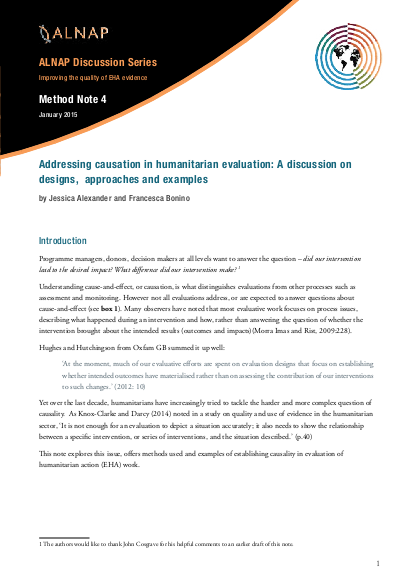Method note #4 (ALNAP Discussion Series: Improving the quality of EHA evidence)

Programme managers, donors, decision makers at all levels want to answer the question – did our intervention lead to the desired impact? What difference did our intervention make?
Understanding cause-and-effect, or causation, is what distinguishes evaluations from other processes such as assessment and monitoring. However not all evaluations address, or are expected to answer questions about cause-and-effect. Many observers have noted that most evaluative work focuses on process issues, describing what happened during an intervention and how, rather than answering the question of whether the intervention brought about the intended results. Over the last decade, humanitarians have increasingly tried to tackle the harder and more complex question of causality.
This note explores this issue, offers methods used and examples of establishing causality in evaluation of humanitarian action (EHA) work.
